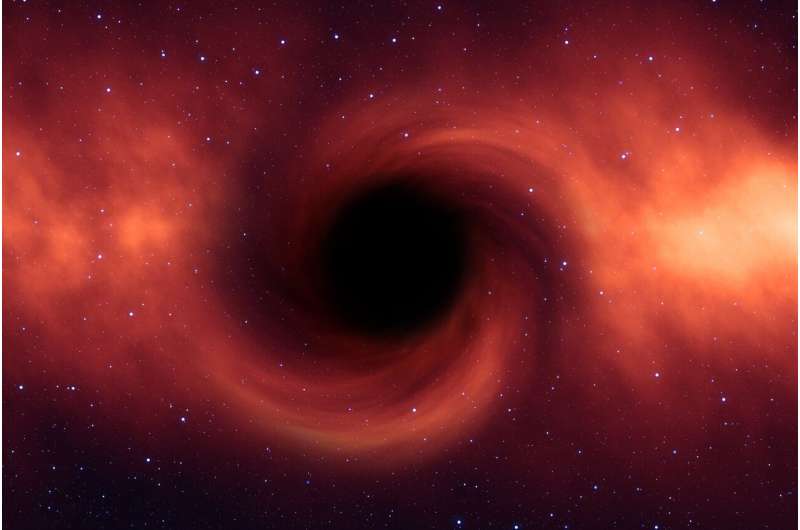Pixabay.
Primordial black holes (PBHs) are fascinating cosmic bodies that have been widely investigated by astrophysicists worldwide. As suggested by their name, these are black holes believed to have appeared in the universe's early days, less than a second after the Big Bang.
Physics theory suggests that within the fraction of a second before the universe was formed, space was not completely homogenous, thus denser and hotter regions could have collapsed into black holes. Depending on when exactly they were formed within this fraction of a second, these PBHs could have very different masses and associated characteristics.
Some theoretical physicists have been exploring the possibility that PBHs contribute significantly to the predicted abundance of dark matter in the universe, or in other words, that they are major dark matter candidates. Gravitational wave observations gathered by the LIGO-Virgo-KAGRA collaboration and constraints set by these observations suggest that this is highly unlikely.
Yet some recent studies suggested that the clustering of PBHs at the time of their formation could change their merger rate, which would potentially enable values within the constraints set by LIGO-Virgo-KAGRA. This clustering would also potentially affect existing microlensing bounds, as PBH clusters would act as a massive single lens that cannot be probed by microlensing studies.
Researchers at Université de Genève, Sapienza University of Rome and NICPB have recently carried out a theoretical study further assessing the hypothesis that initially clustered PBHs could be dark matter candidates. Their paper, published in Physical Review Letters, introduces a relatively simple argument that appears to rule out this possibility.
"Our work was motivated by the claim, not yet proven by literature, that primordial black holes with masses around the solar masses could avoid the current strong constraints coming from microlensing, if they were strongly clustered," Antonio Riotto, one of the researchers who carried out the study, told Phys.org.
"Our study proved that this claim is not correct. The idea is simple: clustered PBHs may avoid the microlensing bound if the clustering is strong enough, but this would be at odds with another set of data coming from Lyman-alpha forest, which suggests that this would require weak clustering."
In their analyses, Riotto and his colleagues combined the constraints from microlensing set by previous astronomical observations with Lyman-alpha forest data. The Lyman-alpha forest is an absorption phenomenon that can be observed using astronomical spectroscopy tools, presenting itself as absorption lines in the spectra of distant galaxies and quasars.
These absorption lines have become a prominent probe in astrophysics, particularly in studies investigating density fluctuations in the Universe. In their paper, the researchers showed that Lyman-alpha forest data suggests that in order to avoid existing microlensing bounds, PBHs would need to be weakly, rather than strongly, clustered, which contradicts the widespread theoretical idea that they were assessing.
"Our analysis rules out the possibility that PBHs could be the dark matter of the universe if they have masses similar to stellar masses," Riotto added. "In our next works, we plan to investigate the role of PBHs further, to see if they can explain other interesting observations, such as the presence of galaxies at high redshifts."
More information: Valerio De Luca et al, Ruling Out Initially Clustered Primordial Black Holes as Dark Matter, Physical Review Letters (2022). DOI: 10.1103/PhysRevLett.129.191302
Journal information: Physical Review Letters
© 2022 Science X Network
























